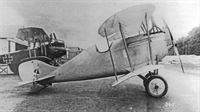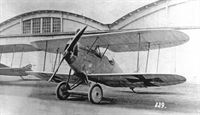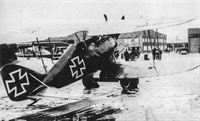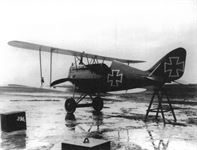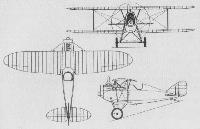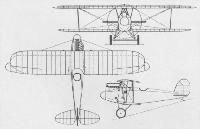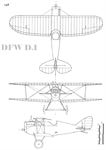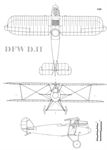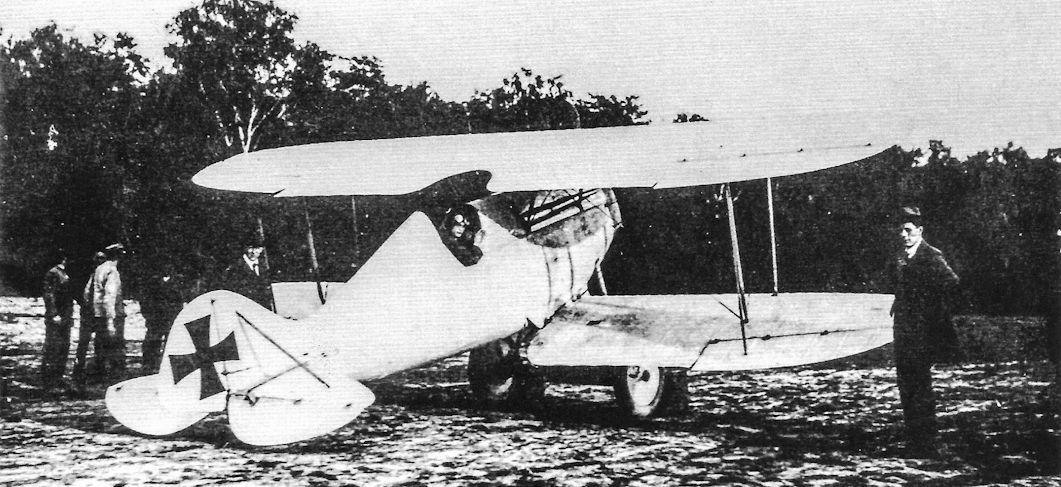
Описание
Страна: Германия
Год: 1917
Fighter
Варианты
- DFW - D.I / D.II / T 34-I - 1917 - Германия
- DFW - T 34-II / Dr.I - 1917 - Германия
- O.Thetford, P.Gray German Aircraft of the First World War (Putnam)
- W.Green, G.Swanborough The Complete Book of Fighters
- J.Herris DFW Aircraft of WWI (A Centennial Perspective on Great War Airplanes 29)
-
J.Herris - DFW Aircraft of WWI /Centennial Perspective/ (29)
The first version of the DFW D.I fighter had a low, rounded vertical tail and ailerons on all wings connected by an actuating strut.
-
J.Herris - DFW Aircraft of WWI /Centennial Perspective/ (29)
The second version of the DFW D.I fighter had a larger rudder and ailerons on all wings connected by an actuating strut. (Peter M. Grosz Collection/SDTB)
-
J.Herris - DFW Aircraft of WWI /Centennial Perspective/ (29)
Front quarter view of the second version of the DFW D.I fighter with ailerons on all wings connected by an actuating strut. (Peter M. Grosz Collection/SDTB)
-
J.Herris - DFW Aircraft of WWI /Centennial Perspective/ (29)
The third and final version of the DFW D.I seen here at the First Fighter Competition had a still larger fin and rudder and ailerons on the upper wings only.
-
J.Herris - DFW Aircraft of WWI /Centennial Perspective/ (29)
Rear quarter view of the third version of the DFW D.I fighter with ailerons on the upper wings only; this version appears identical to the aircraft entered in the First Fighter Competition. (Peter M. Grosz Collection/SDTB)
-
M.Dusing - German Aviation Industry in WWI. Volume 1 /Centennial Perspective/ (84)
The DFW D.II (internal factory designation F 34), powered by a Mercedes D.IIIa, was entered in the Second Fighter Competition. Like the T 34 prototypes it was rejected before the flight evaluations began, but the reasons are not known. (Peter M. Grosz Collection/SDTB)
-
W.Green, G.Swanborough - The Complete Book of Fighters
Contrasting with the T 28, the DFW T 34-I was a conventional single-bay biplane.
-
W.Green, G.Swanborough - The Complete Book of Fighters
The DFW DI with Mercedes D IIIa engine.
O.Thetford, P.Gray German Aircraft of the First World War (Putnam)
D.F.W. D I
A 1917 prototype with ply-covered fuselage and car-type radiator at nose. Engine, 160 h.p. Mercedes D III.
D.F.W. D I (modified)
In this model of the D I a rudder of increased area was fitted. Engine, 160 h.p. Mercedes D III. Armament, twin Spandau machine-guns.
D.F.W. D I (final modification)
In this version further revision of the tail surfaces may be noted, and the ailerons at the lower wingtips have been deleted. The photograph was taken at Adlershof in January 1918. Engine, 160 h.p. Mercedes D III. Armament, twin Spandau machine-guns.
D.F.W. F 34
The D II designation sometimes applied to this single-seater is unconfirmed. The aircraft was completed April 1918, but does not appear to have participated in the D types Competitions. Engine, 160 h.p. Mercedes D III. Span, 9.08 m. (29 ft. 9 1/2 in.). Length, 5.5 m. (18 ft. 0 5/8 in.). Area, 23 sq.m. (248.4 sq.ft.). Speed, 177 km.hr. (110.5 m.p.h.). Climb, 1,000 m. (3,280 ft.) in 2 min., 5,000 m. (16,400 ft.) in 20 min. Armament, twin Spandau machine-guns.
Описание:


